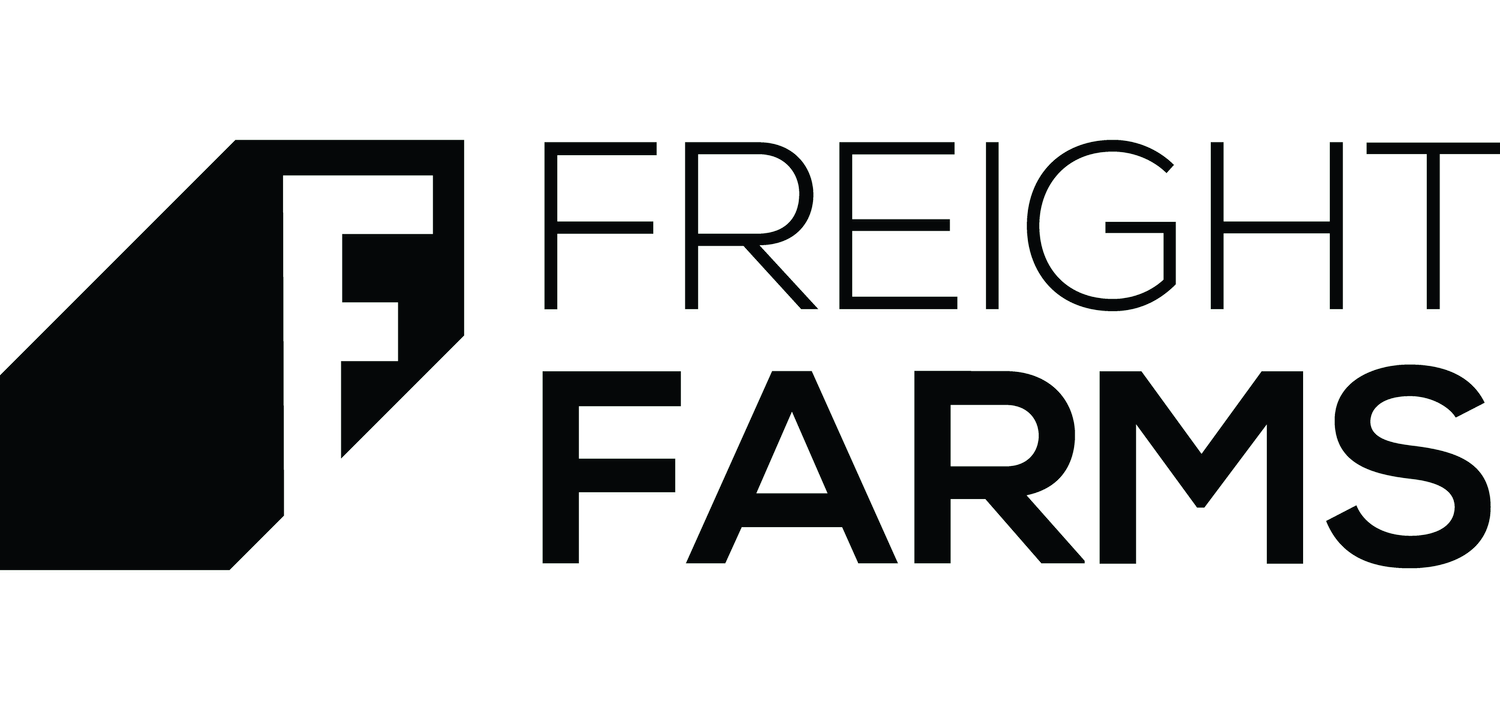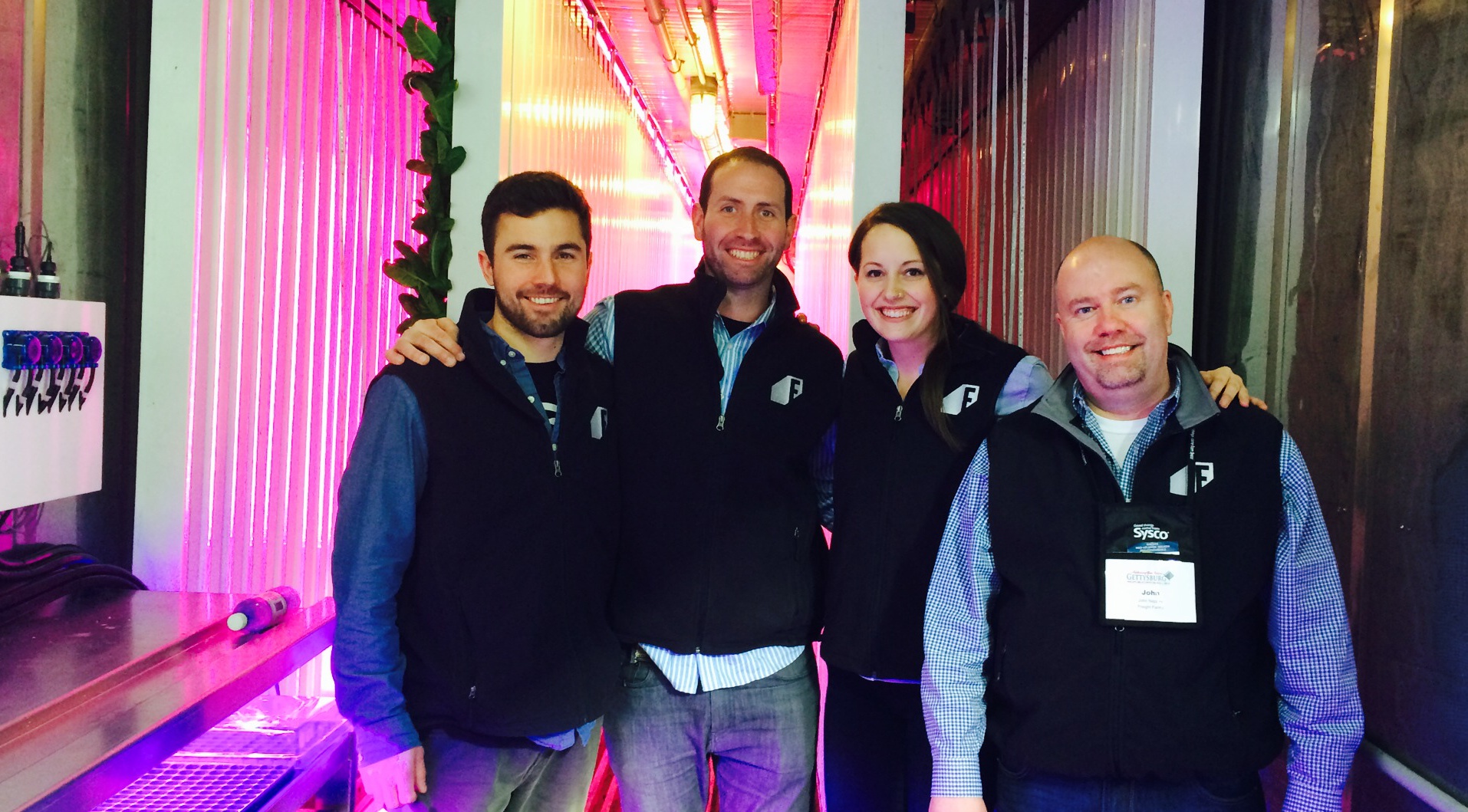Inaugural stop of the LGM Tour: Gettysburg College
You may be thinking, why did Freight Farms choose Gettysburg, Pennsylvania as the first stop on the LGM tour? Well, The National Association for College and University Food Service, otherwise known as NACUFS, gathered all of the folks responsible for bringing food into schools in one place for a conference last week, so few of us travelled down with the LGM to talk with them. The showcase was abuzz with conversations around responsibly and sustainably-sourced food, and Freight Farms fit seamlessly into this discussion. The enthusiastic response towards the LGM was overwhelming.
Students from universities and colleges around the country are demanding more sustainably sourced and locally grown food in their dining halls. If you’re not familiar with the Real Food Challenge, I encourage you to check it out. Currently, there are 30 schools across the country who have signed onto this challenge, which means that the school has pledged to commit to sourcing locally at least 20% of the food served on campus by 2020, and countless more student groups are urging their campuses to source locally without the RFC.
We at Freight Farms strongly believe in the goals each group and university is working to accomplish. But we also understand the obstacles and limitations of sourcing locally in most climates, year-round - especially if local farmers aren’t able to meet the volume required by larger institutions.
That’s where we want to help.
Freight Farms provides a tool for schools to make an immediate impact on their local food supply - simply place one on campus and get growing! Not only would campus chefs get to choose what produce to grow and how to incorporate it into daily menus, students would also learn the full story of their food, from farm-to-table.
Personally, the thing that gets me most excited about having Freight Farms on college campuses is the engagement opportunities it provides. Bringing the farm on campus allows students to get involved in the process of growing, fostering new and exciting conversations around food and innovation.
Let’s say a university has an agriculture program. Classes can promote hands-on learning with the LGM, teaching new methods of hydroponic and indoor growing. What about sustainability groups? It can be used to demonstrate how the school is reducing its carbon footprint by growing food where it’s being consumed. How about urban planning or architecture departments? Inspire students to design smarter cities that incorporate food production right into the infrastructure of a building.
All in all, it’s a pretty awesome way to integrate sustainable food production into school operations, making high-quality food a staple of the culture. And I’m thrilled to say that everyone at the NACUFS conference was very excited to tour a farm and explore the possibilities of having one on their campus in the near future.

